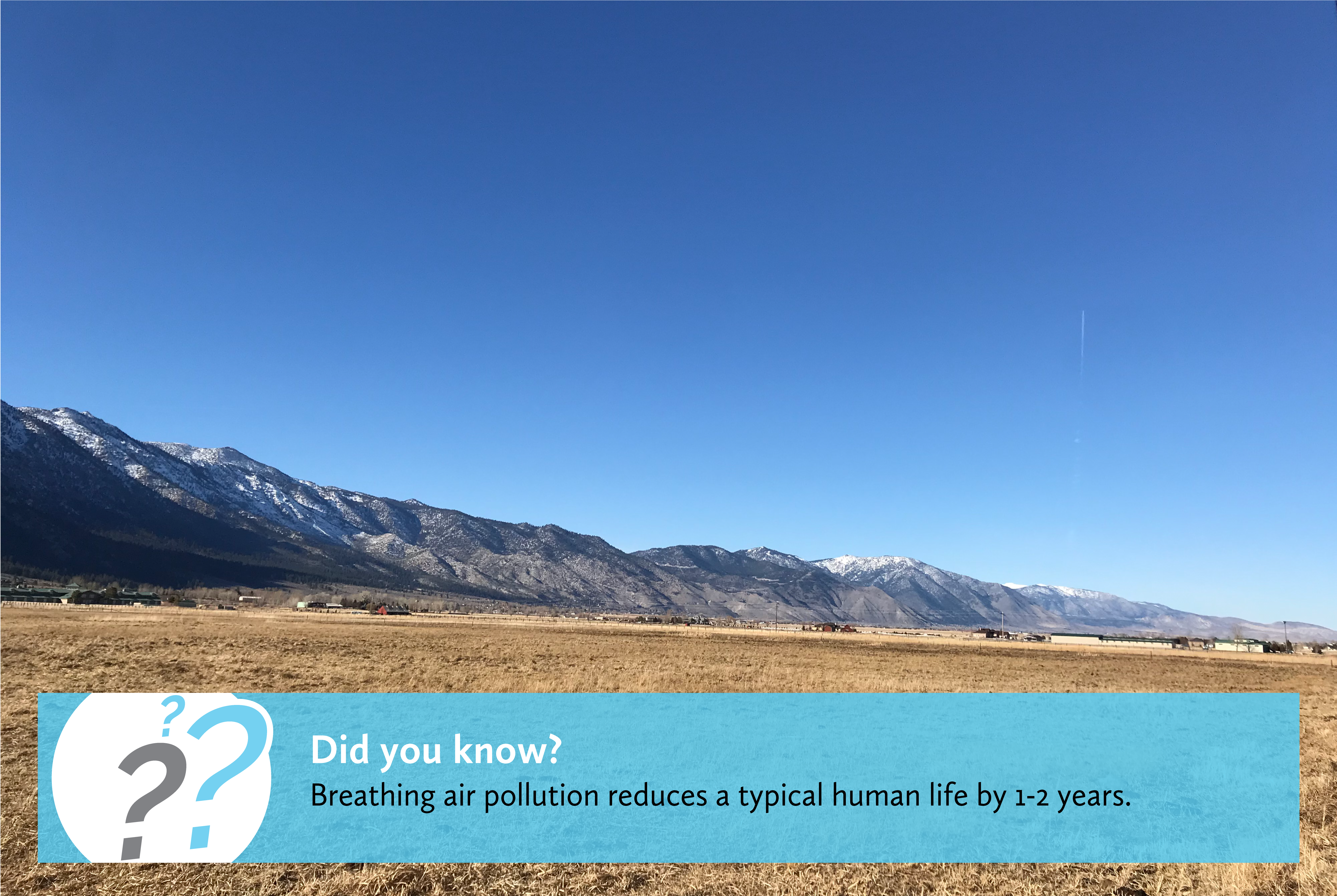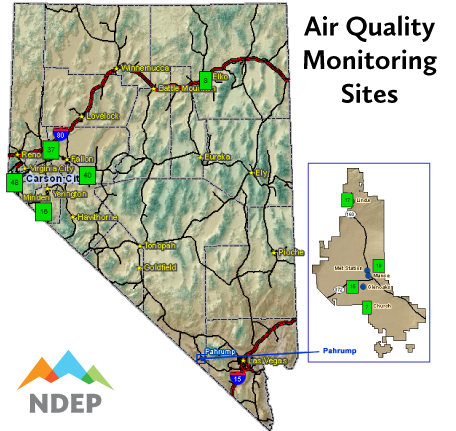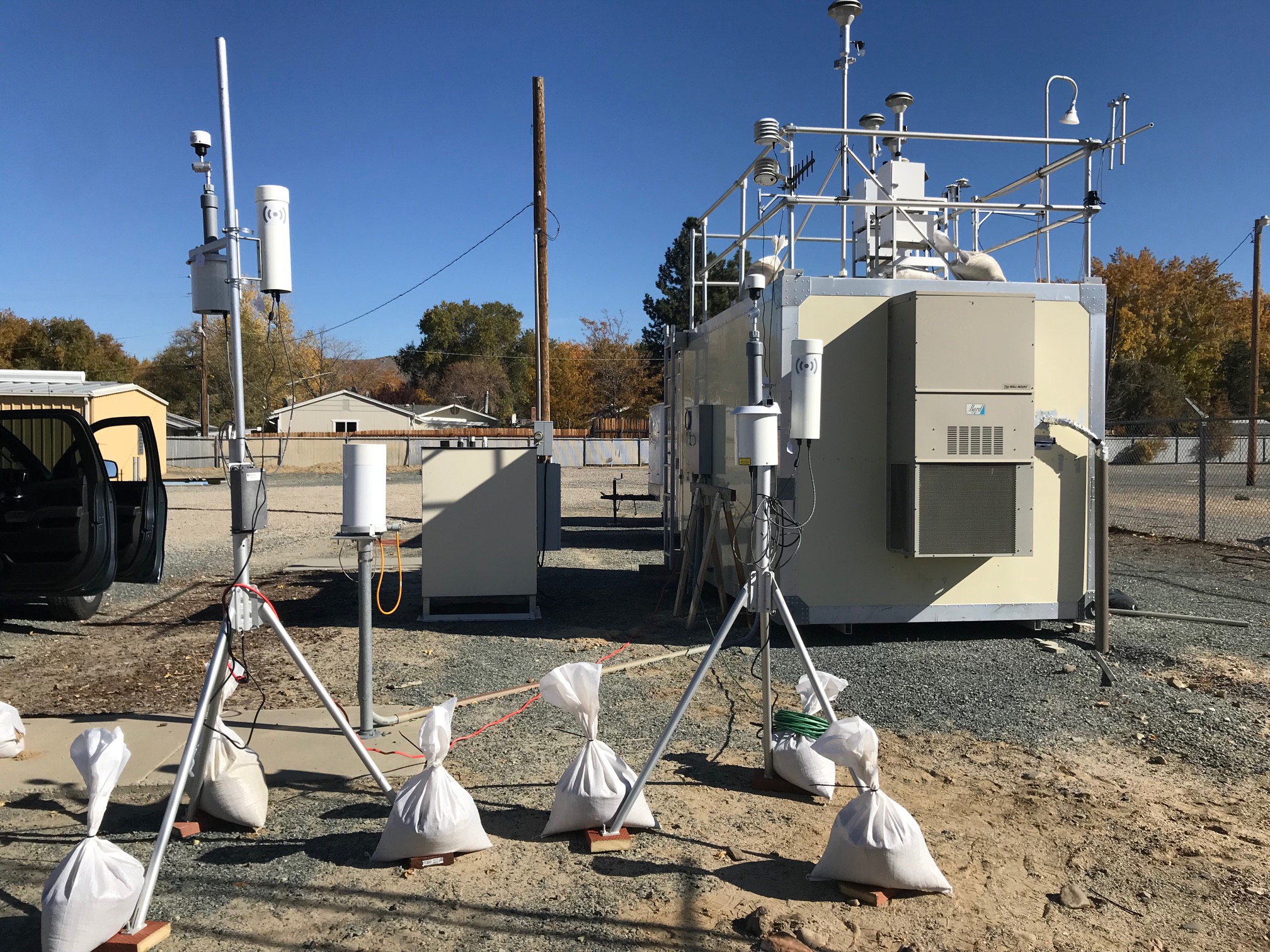Day 3: Air Quality Index & Sensors - Air Quality Awareness 2019


Every time you go online to check the air quality in your community, you’re tapping into a network of specialized sensors placed across Nevada. From Pahrump to Elko to Carson City, air quality monitors give us insight into the air outside, constantly documenting pollution concentrations throughout the day.
But it takes intentionality to make such important data available on your personal phone or laptop. Environmental scientists at the Nevada Division of Environmental Protection (NDEP) use raw data from these sensors to calculate air quality, like today’s forecast above. It’s a task that involves long drives across the state to make sure Nevada’s sensors are in top shape. And it requires careful collection and storage of data — lot’s of it.
Keep reading to learn more about what Nevada is doing to monitor the quality of our air.

Why aren’t Reno and Las Vegas on the map?
Washoe and Clark counties have their own air quality agencies. Both maintain their own networks of sensors to measure air pollution, producing AQIs for areas around Reno and Las Vegas.
Why isn’t there an air quality site in my community?
NDEP keeps air quality sites in communities with the highest populations and with historically poor air quality. But we use other methods to support rural communities too:
- Visibility. We estimate air quality by observing the visibility of local landmarks like mountains or large buildings. When the sky is smoky, distant (or even nearby) objects can vanish — sometimes completely. How far we can see tells us something about the quality of the air. You can try this too using our visibility guide.
- Portable air sensors. Portable and inexpensive air sensors are becoming common and accessible to the public. We will soon start a program to loan portable sensors to communities that are being impacted by wildfires. Portable air sensors aren’t as precise as our official, regulated sensors. But with a little practice, personal air sensors can provide meaningful, real-time data. Check back on Friday to learn how to accurately use portable air sensors.

